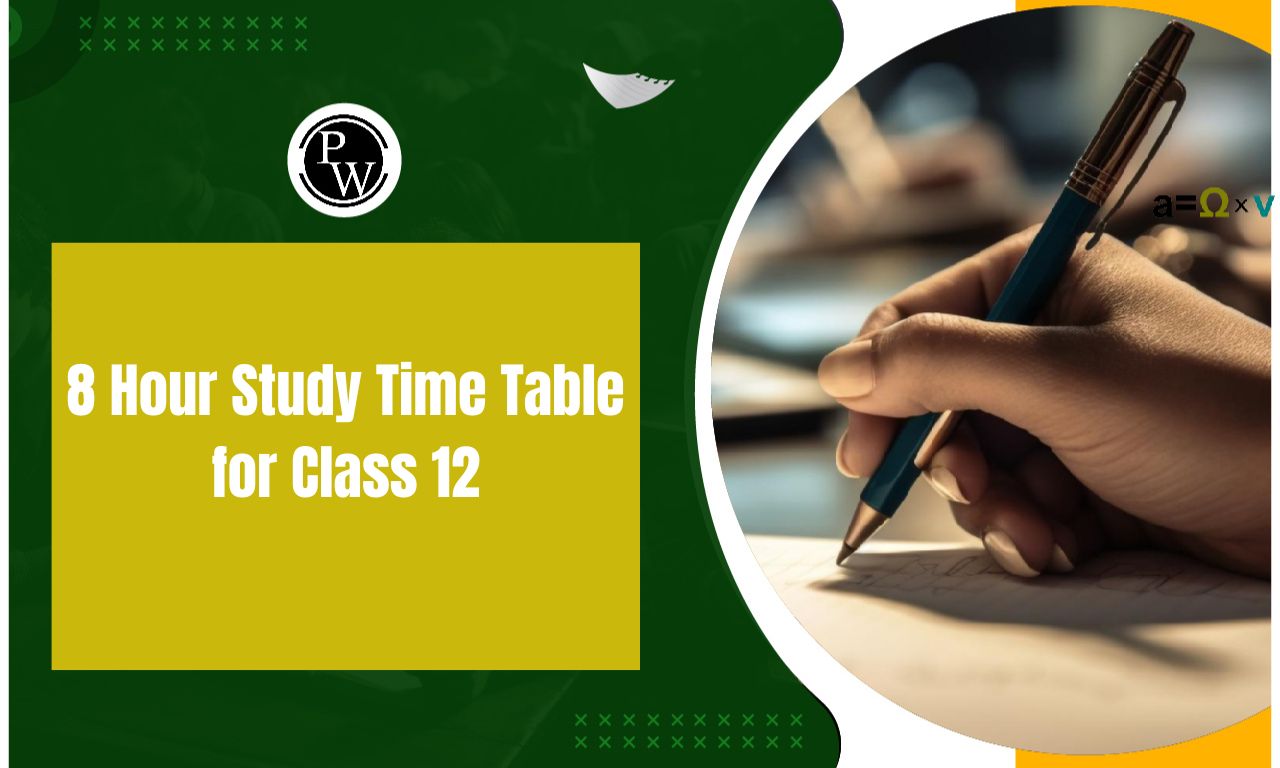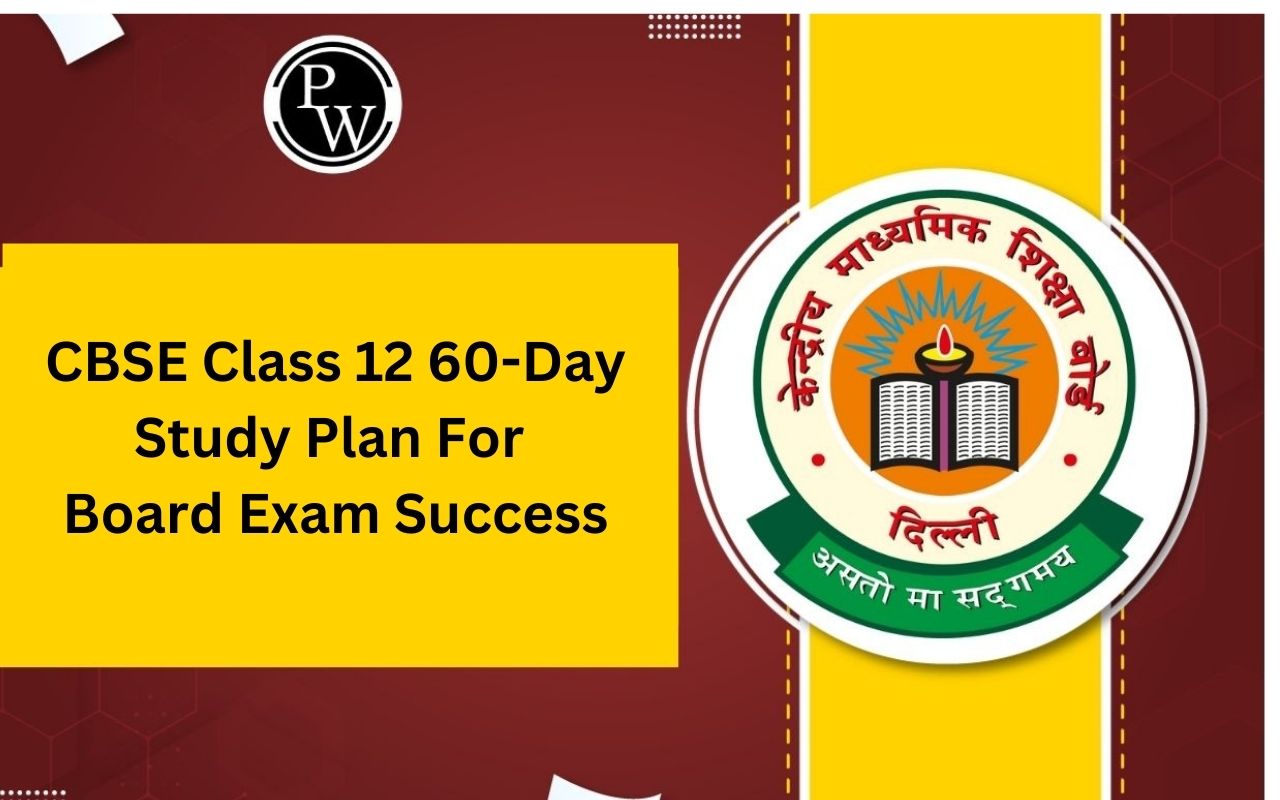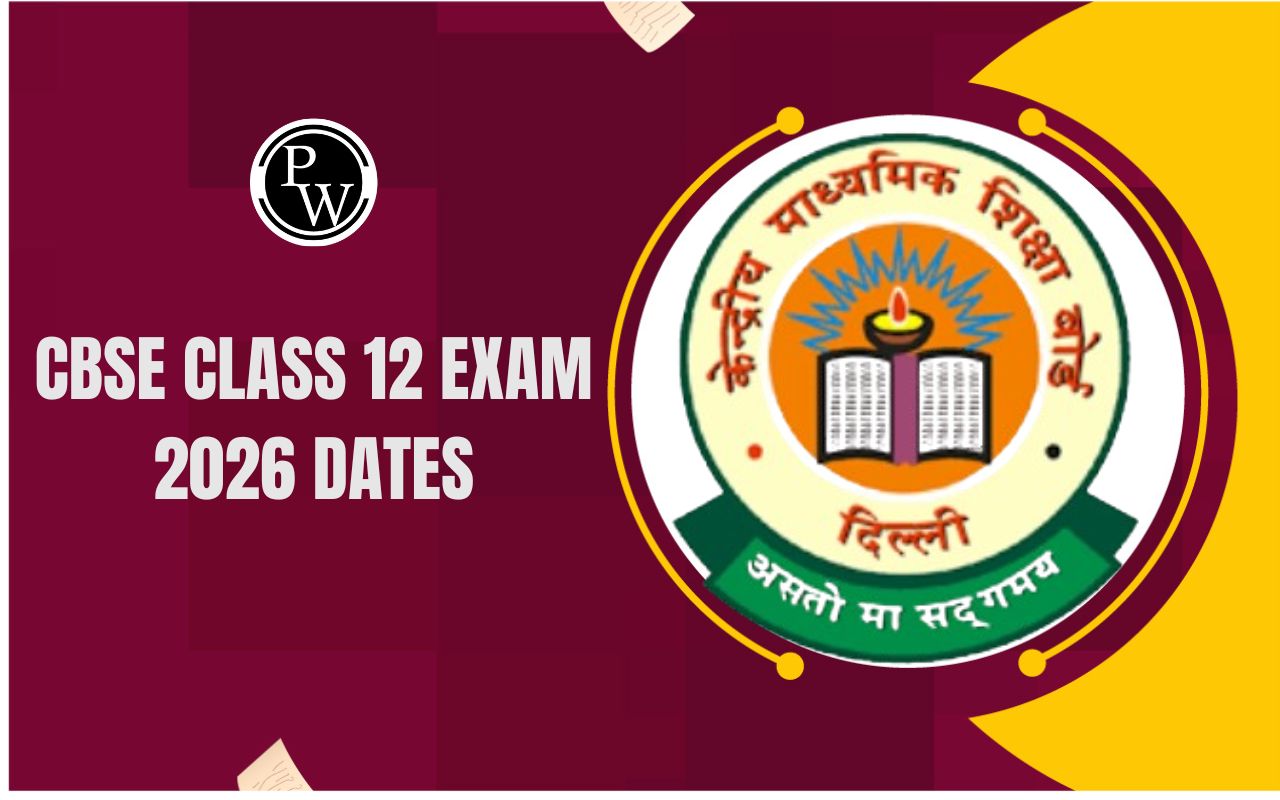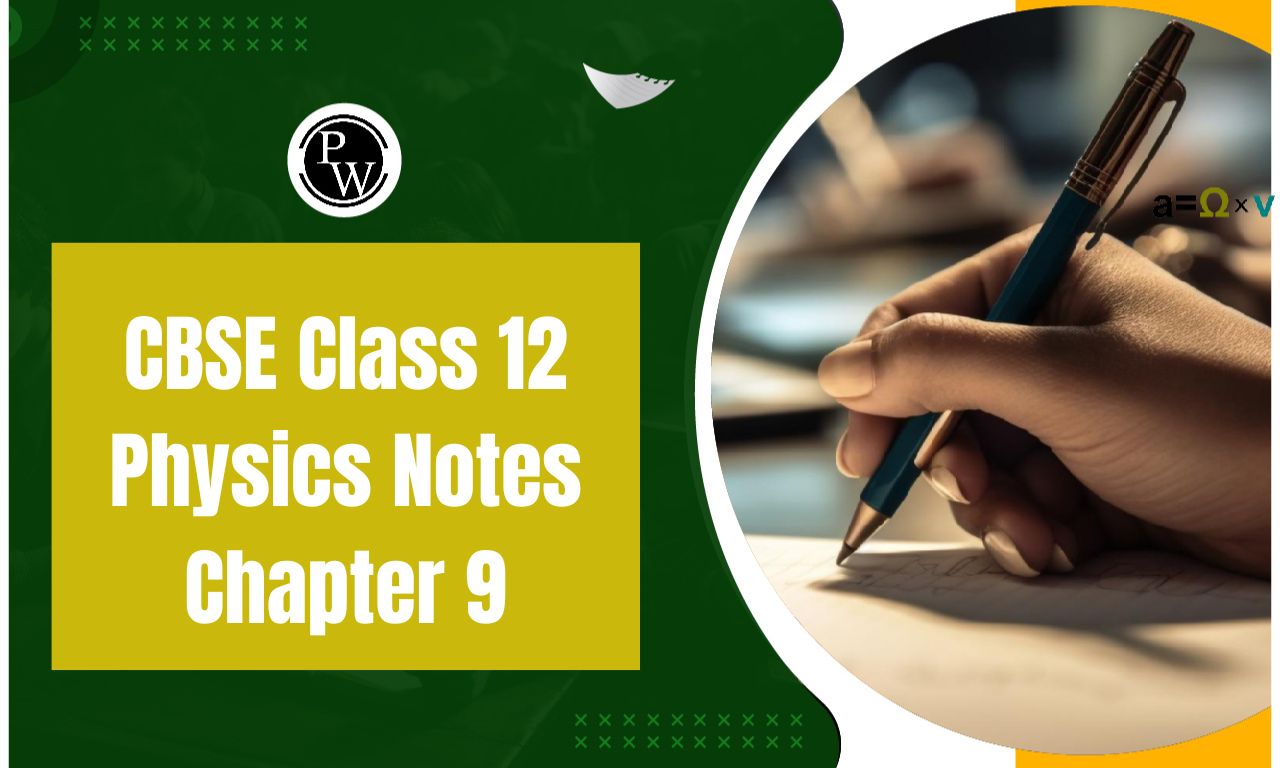
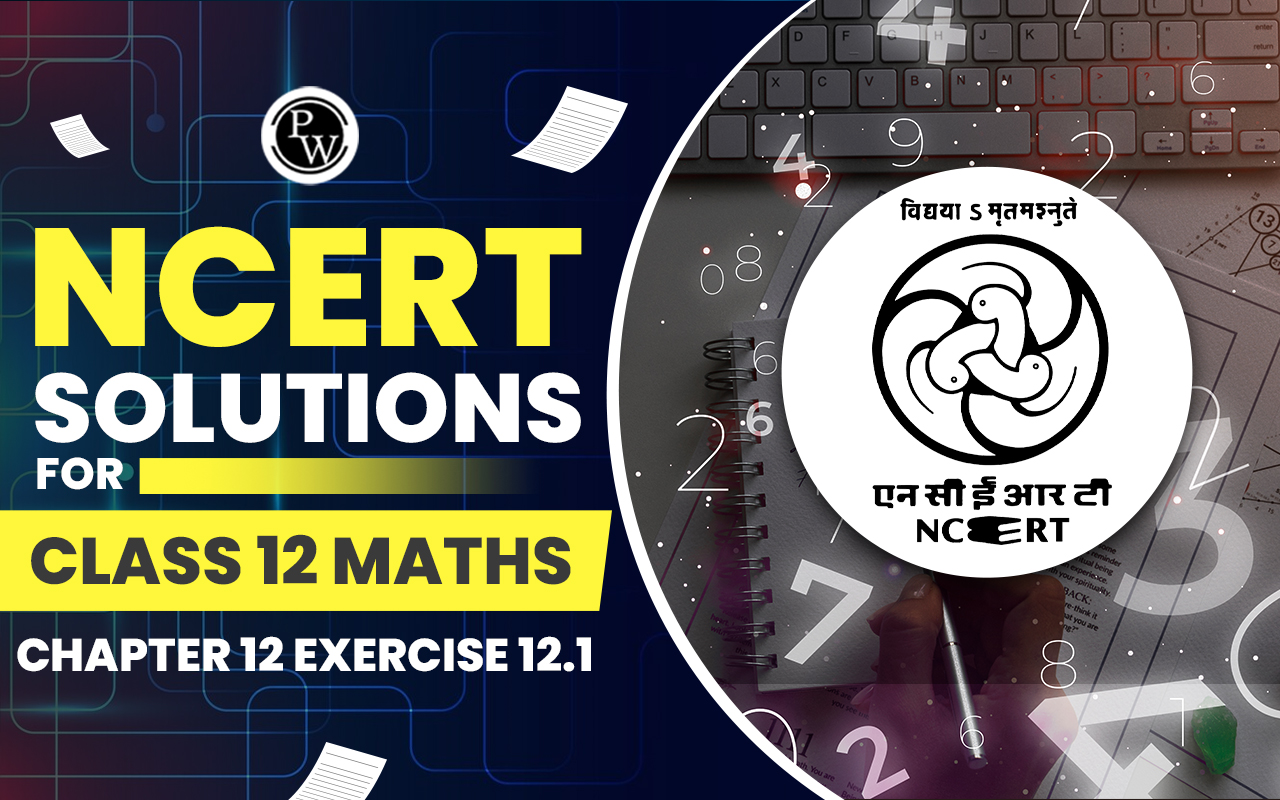
NCERT Solutions for Class 12 Maths Chapter 12 Exercise 12.1 (Linear Programming)
NCERT Solutions for Class 12 Maths Chapter 12 Exercise 12.1 Linear Programming is prepared by the academic team of Physics Wallah. We have prepared NCERT Solutions for all exercise of chapter 12. Given below is the step by step solutions of all questions given in the NCERT Solutions for Class 12 Maths Chapter 12 Exercise 12.1.NCERT Solutions for Class 12 Maths Chapter 12 Exercise 12.2
NCERT Solutions for Class 12 Maths Chapter 12 Exercise 12.1 Overview
NCERT Solutions for Class 12 Maths Chapter 12 Exercise 12.1 covers these important topics. Students are encouraged to review each topic thoroughly in order to fully understand the concepts taught in the chapter and make optimal use of the provided solutions. These NCERT Solutions for Class 12 Maths Chapter 12 Exercise 12.1 are the outcome of the dedicated effort that the Physics Wallah teachers have been doing to aid students in understanding the ideas covered in this chapter. After going over NCERT Solutions for Class 12 Maths Chapter 12 Exercise 12.1 and rehearsing these questions, students will be able to score good marks in their examinationsNCERT Solutions for Class 12 Maths Chapter 12 Exercise 12.1
Solve The Following Questions of NCERT Solutions for Class 12 Maths Chapter 12 Exercise 12.1
Solve the following Linear Programming Problems graphically: Question 1. Maximize Z = 3 x + 4 y subject to the constraints: x + y ≤ 4, x ≥ 0, y ≥ 0. Solution : The feasible region determined by the constraints, x + y ≤ 4, x ≥ 0, y ≥ 0, is as follows. The corner points of the feasible region are O (0, 0), A (4, 0), and B (0, 4). The values of Z at these points are as follows.
The corner points of the feasible region are O (0, 0), A (4, 0), and B (0, 4). The values of Z at these points are as follows.  Therefore, the maximum value of Z is 16 at the point B (0, 4).
Question 2. Minimise Z = – 3x + 4 y subject to x + 2y ≤ 8, 3x + 2y ≤ 12, x ≥ 0, y ≥ 0. Solution : The feasible region determined by the system of constraints,x + 2y ≤ 8, 3x + 2y ≤ 12, x ≥ 0, and y ≥ 0, is as follows.
Therefore, the maximum value of Z is 16 at the point B (0, 4).
Question 2. Minimise Z = – 3x + 4 y subject to x + 2y ≤ 8, 3x + 2y ≤ 12, x ≥ 0, y ≥ 0. Solution : The feasible region determined by the system of constraints,x + 2y ≤ 8, 3x + 2y ≤ 12, x ≥ 0, and y ≥ 0, is as follows.  The corner points of the feasible region are O (0, 0), A (4, 0), B (2, 3), and C (0, 4). The values of Z at these corner points are as follows.
The corner points of the feasible region are O (0, 0), A (4, 0), B (2, 3), and C (0, 4). The values of Z at these corner points are as follows.  Therefore, the minimum value of Z is −12 at the point (4, 0). Question 3. Maximise Z = 5x + 3y subject to 3x + 5y ≤ 15, 5x + 2y ≤ 10, x ≥ 0, y ≥ 0 Solution : The feasible region determined by the system of constraints, 3 x + 5 y ≤ 15, 5 x + 2 y ≤ 10, x ≥ 0, and y ≥ 0, are as follows.
Therefore, the minimum value of Z is −12 at the point (4, 0). Question 3. Maximise Z = 5x + 3y subject to 3x + 5y ≤ 15, 5x + 2y ≤ 10, x ≥ 0, y ≥ 0 Solution : The feasible region determined by the system of constraints, 3 x + 5 y ≤ 15, 5 x + 2 y ≤ 10, x ≥ 0, and y ≥ 0, are as follows.  The corner points of the feasible region are O (0, 0), A (2, 0), B (0, 3), and C(20/19, 45/19). The values of Z at these corner points are as follows.
The corner points of the feasible region are O (0, 0), A (2, 0), B (0, 3), and C(20/19, 45/19). The values of Z at these corner points are as follows.  Therefore, the maximum value of Z is 235/19 at the point (20/19, 45/19). Question 4. Minimise Z = 3x + 5y such that x + 3y ≥ 3, x + y ≥ 2, x, y ≥ 0. Solution : The feasible region determined by the system of constraints, x + 3y ≥ 3, x + y ≥ 2, and x , y ≥ 0, is as follows.
Therefore, the maximum value of Z is 235/19 at the point (20/19, 45/19). Question 4. Minimise Z = 3x + 5y such that x + 3y ≥ 3, x + y ≥ 2, x, y ≥ 0. Solution : The feasible region determined by the system of constraints, x + 3y ≥ 3, x + y ≥ 2, and x , y ≥ 0, is as follows.  It can be seen that the feasible region is unbounded. The corner points of the feasible region are A (3, 0), B(3/2,1/2), and C (0, 2). The values of Z at these corner points are as follows.
It can be seen that the feasible region is unbounded. The corner points of the feasible region are A (3, 0), B(3/2,1/2), and C (0, 2). The values of Z at these corner points are as follows.  As the feasible region is unbounded, therefore, 7 may or may not be the minimum value of Z. For this, we draw the graph of the inequality, 3 x + 5 y < 7, and check whether the resulting half plane has points in common with the feasible region or not. It can be seen that the feasible region has no common point with 3 x + 5 y < 7 Therefore, the minimum value of Z is 7 at (3/2,1/2). Question 5. Maximise Z = 3x + 2y subject to x + 2y ≤ 10, 3x + y ≤ 15, x, y ≥ 0. Solution : The feasible region determined by the constraints, x + 2 y ≤ 10, 3 x + y ≤ 15, x ≥ 0, and y ≥ 0, is as follows.
As the feasible region is unbounded, therefore, 7 may or may not be the minimum value of Z. For this, we draw the graph of the inequality, 3 x + 5 y < 7, and check whether the resulting half plane has points in common with the feasible region or not. It can be seen that the feasible region has no common point with 3 x + 5 y < 7 Therefore, the minimum value of Z is 7 at (3/2,1/2). Question 5. Maximise Z = 3x + 2y subject to x + 2y ≤ 10, 3x + y ≤ 15, x, y ≥ 0. Solution : The feasible region determined by the constraints, x + 2 y ≤ 10, 3 x + y ≤ 15, x ≥ 0, and y ≥ 0, is as follows.  The corner points of the feasible region are A (5, 0), B (4, 3), and C (0, 5). The values of Z at these corner points are as follows.
The corner points of the feasible region are A (5, 0), B (4, 3), and C (0, 5). The values of Z at these corner points are as follows.  Therefore, the maximum value of Z is 18 at the point (4, 3). Question 6. Minimise Z = x + 2y subject to 2x + y ≥ 3, x + 2y ≥ 6, x, y ≥ 0. Solution : The feasible region determined by the constraints, 2 x + y ≥ 3, x + 2 y ≥ 6, x ≥ 0, and y ≥ 0, is as follows.
Therefore, the maximum value of Z is 18 at the point (4, 3). Question 6. Minimise Z = x + 2y subject to 2x + y ≥ 3, x + 2y ≥ 6, x, y ≥ 0. Solution : The feasible region determined by the constraints, 2 x + y ≥ 3, x + 2 y ≥ 6, x ≥ 0, and y ≥ 0, is as follows.  The corner points of the feasible region are A (6, 0) and B (0, 3). The values of Z at these corner points are as follows.
The corner points of the feasible region are A (6, 0) and B (0, 3). The values of Z at these corner points are as follows.  It can be seen that the value of Z at points A and B is same. If we take any other point such as (2, 2) on line x + 2 y = 6, then Z = 6 Thus, the minimum value of Z occurs for more than 2 points. Therefore, the value of Z is minimum at every point on the line, x + 2 y = 6 Question 7. Minimise and Maximise Z = 5x + 10 y subject to x + 2y ≤ 120, x + y ≥ 60, x – 2y ≥ 0, x, y ≥ 0. Solution : The feasible region determined by the constraints, x + 2 y ≤ 120, x + y ≥ 60, x − 2 y ≥ 0, x ≥ 0, and y ≥ 0, is as follows.
It can be seen that the value of Z at points A and B is same. If we take any other point such as (2, 2) on line x + 2 y = 6, then Z = 6 Thus, the minimum value of Z occurs for more than 2 points. Therefore, the value of Z is minimum at every point on the line, x + 2 y = 6 Question 7. Minimise and Maximise Z = 5x + 10 y subject to x + 2y ≤ 120, x + y ≥ 60, x – 2y ≥ 0, x, y ≥ 0. Solution : The feasible region determined by the constraints, x + 2 y ≤ 120, x + y ≥ 60, x − 2 y ≥ 0, x ≥ 0, and y ≥ 0, is as follows.  The corner points of the feasible region are A (60, 0), B (120, 0), C (60, 30), and D (40, 20). The values of Z at these corner points are as follows.
The corner points of the feasible region are A (60, 0), B (120, 0), C (60, 30), and D (40, 20). The values of Z at these corner points are as follows.  The minimum value of Z is 300 at (60, 0) and the maximum value of Z is 600 at all the points on the line segment joining (120, 0) and (60, 30). Question 8. Minimise and Maximise Z = x + 2y subject to x + 2y ≥ 100, 2x – y ≤ 0, 2x + y ≤ 200; x, y ≥ 0. Solution : The feasible region determined by the constraints, x + 2 y ≥ 100, 2 x − y ≤ 0, 2 x + y ≤ 200, x ≥ 0, and y ≥ 0, is as follows.
The minimum value of Z is 300 at (60, 0) and the maximum value of Z is 600 at all the points on the line segment joining (120, 0) and (60, 30). Question 8. Minimise and Maximise Z = x + 2y subject to x + 2y ≥ 100, 2x – y ≤ 0, 2x + y ≤ 200; x, y ≥ 0. Solution : The feasible region determined by the constraints, x + 2 y ≥ 100, 2 x − y ≤ 0, 2 x + y ≤ 200, x ≥ 0, and y ≥ 0, is as follows.  The corner points of the feasible region are A(0, 50), B(20, 40), C(50, 100), and D(0, 200). The values of Z at these corner points are as follows.
The corner points of the feasible region are A(0, 50), B(20, 40), C(50, 100), and D(0, 200). The values of Z at these corner points are as follows.  The maximum value of Z is 400 at (0, 200) and the minimum value of Z is 100 at all the points on the line segment joining the points (0, 50) and (20, 40). Question 9. Maximise Z = – x + 2y, subject to the constraints x ≥ 3, x + y ≥ 5, x + 2y ≥ 6, y ≥ 0. Solution : The feasible region determined by the constraints, x ≥ 3, x + y ≥ 5, x + 2y ≥ 6 and y ≥ 0 is as follows.
The maximum value of Z is 400 at (0, 200) and the minimum value of Z is 100 at all the points on the line segment joining the points (0, 50) and (20, 40). Question 9. Maximise Z = – x + 2y, subject to the constraints x ≥ 3, x + y ≥ 5, x + 2y ≥ 6, y ≥ 0. Solution : The feasible region determined by the constraints, x ≥ 3, x + y ≥ 5, x + 2y ≥ 6 and y ≥ 0 is as follows.  It can be seen that the feasible region is unbounded. The values of Z at corner points A (6, 0), B (4, 1), and C (3, 2) are as follows.
It can be seen that the feasible region is unbounded. The values of Z at corner points A (6, 0), B (4, 1), and C (3, 2) are as follows.
|
Corner point |
Z = − x + 2 y |
|
A(6, 0) |
Z = − 6 |
|
B(4, 1) |
Z = − 2 |
|
C(3, 2) |
Z = 1 |
 Hence there is no maximum Z.
Hence there is no maximum Z.NCERT Solutions For Class 12 Maths Chapter 12 Exercise 12.1 FAQs
What is chapter 12 of maths class 12?
The class 12 maths NCERT solutions chapter 12 is entirely based on linear programming. The topics covered are solving linear programming problems graphically, maximizing and minimizing a given equation as well as diet, manufacturing, and transportation questions.
Is maths of class 11 and 12 easy?
Math in 11th is a “tough nut to crack” for students initially because they are not used to the new concepts and methods. As and when they get the hang of the concepts, they start gaining interest in the subject. Math of 11th standard is analytical and a little abstract.
Is there any optional exercise in chapter 12 of class 10th Maths?
Yes, there are no optional exercise in chapter 12 of class 10th Maths. Exercise 13.2 is challenging because this exercise contains logical questions which require higher-order thinking skills. Students find this exercise a little complex as compared to other exercises of this chapter.
Which topics students should revise before starting chapter 12 of class 10 Maths?
Before starting chapter 12 of class 10 Maths, Students should revise all the formulas mentioned in chapter 12 (surface areas and volumes) of class 9th Maths.
🔥 Trending Blogs
Talk to a counsellorHave doubts? Our support team will be happy to assist you!

Check out these Related Articles
Free Learning Resources
PW Books
Notes (Class 10-12)
PW Study Materials
Notes (Class 6-9)
Ncert Solutions
Govt Exams
Class 6th to 12th Online Courses
Govt Job Exams Courses
UPSC Coaching
Defence Exam Coaching
Gate Exam Coaching
Other Exams
Know about Physics Wallah
Physics Wallah is an Indian edtech platform that provides accessible & comprehensive learning experiences to students from Class 6th to postgraduate level. We also provide extensive NCERT solutions, sample paper, NEET, JEE Mains, BITSAT previous year papers & more such resources to students. Physics Wallah also caters to over 3.5 million registered students and over 78 lakh+ Youtube subscribers with 4.8 rating on its app.
We Stand Out because
We provide students with intensive courses with India’s qualified & experienced faculties & mentors. PW strives to make the learning experience comprehensive and accessible for students of all sections of society. We believe in empowering every single student who couldn't dream of a good career in engineering and medical field earlier.
Our Key Focus Areas
Physics Wallah's main focus is to make the learning experience as economical as possible for all students. With our affordable courses like Lakshya, Udaan and Arjuna and many others, we have been able to provide a platform for lakhs of aspirants. From providing Chemistry, Maths, Physics formula to giving e-books of eminent authors like RD Sharma, RS Aggarwal and Lakhmir Singh, PW focuses on every single student's need for preparation.
What Makes Us Different
Physics Wallah strives to develop a comprehensive pedagogical structure for students, where they get a state-of-the-art learning experience with study material and resources. Apart from catering students preparing for JEE Mains and NEET, PW also provides study material for each state board like Uttar Pradesh, Bihar, and others
Copyright © 2025 Physicswallah Limited All rights reserved.
Get App
